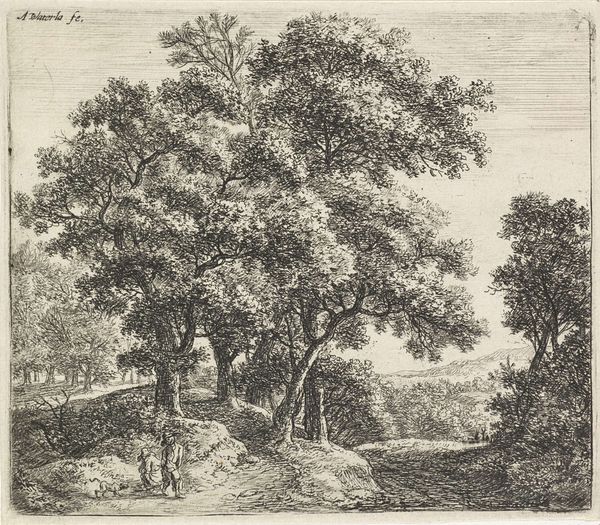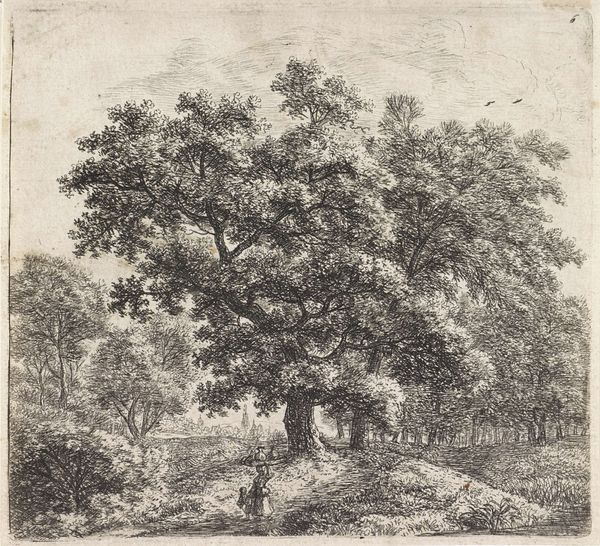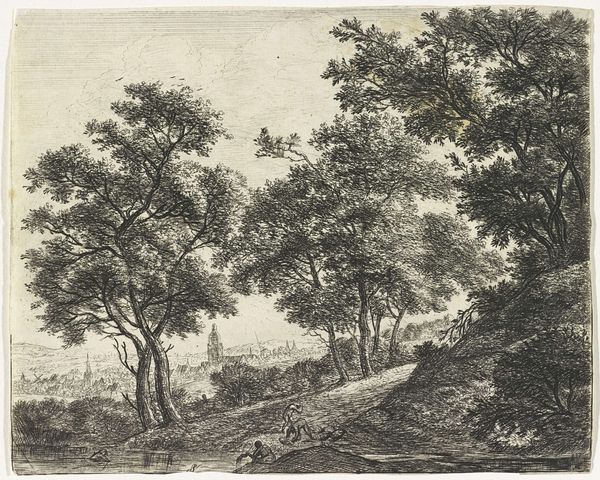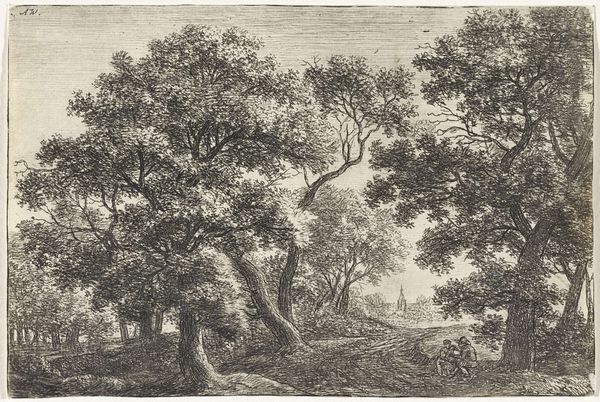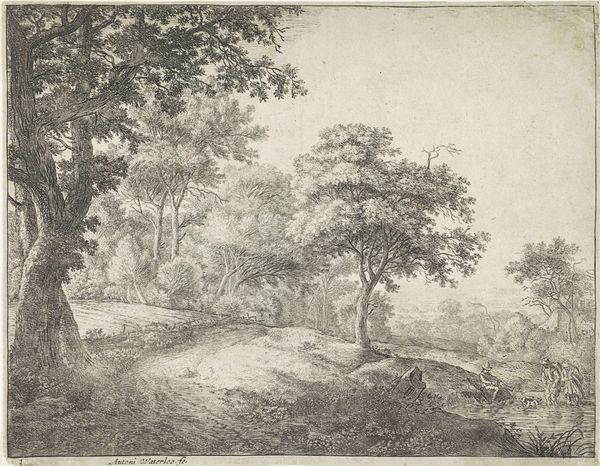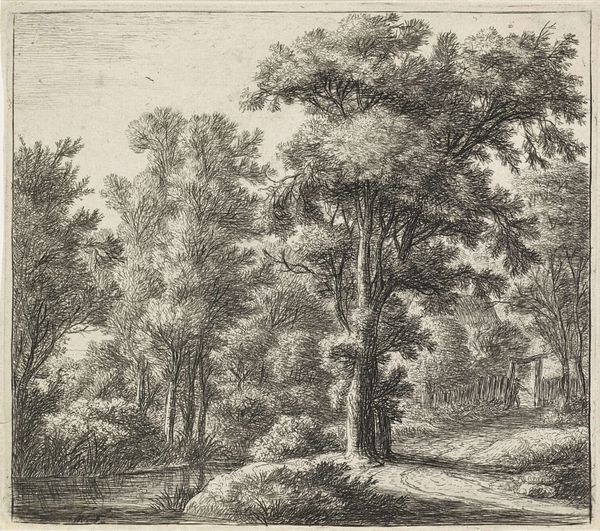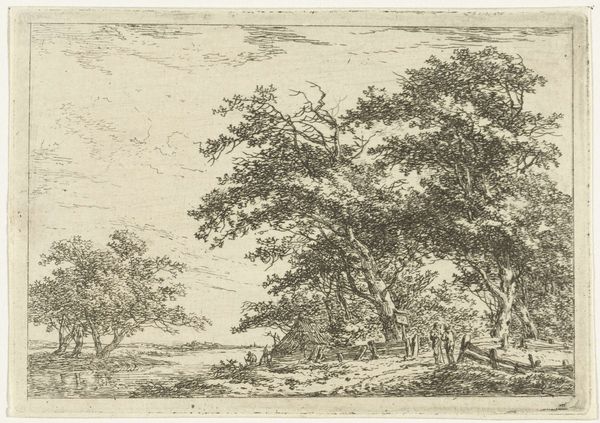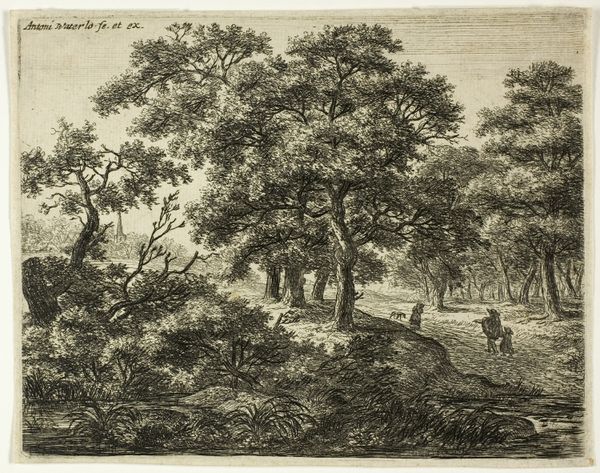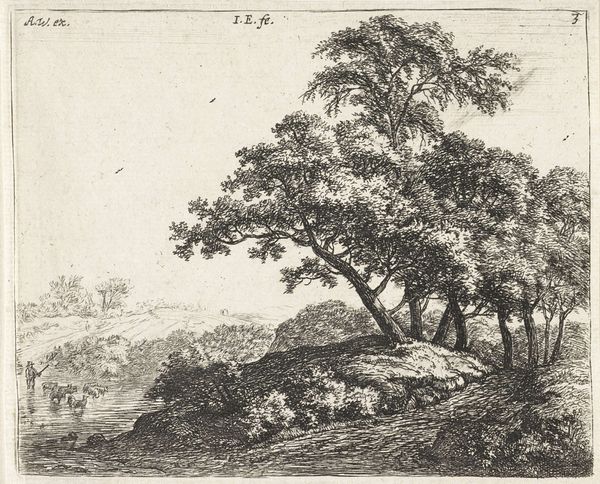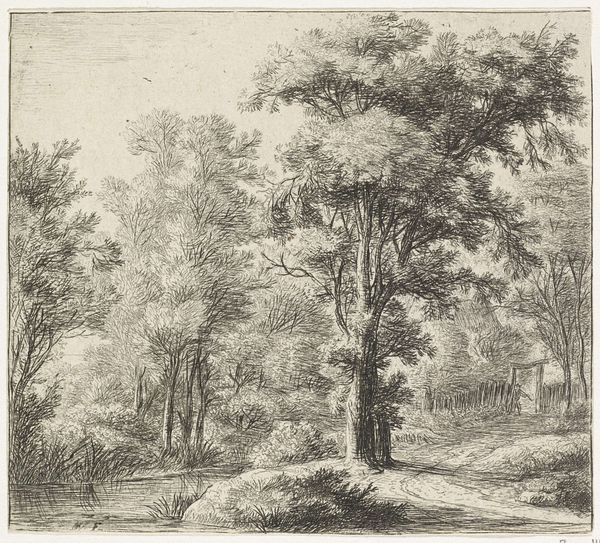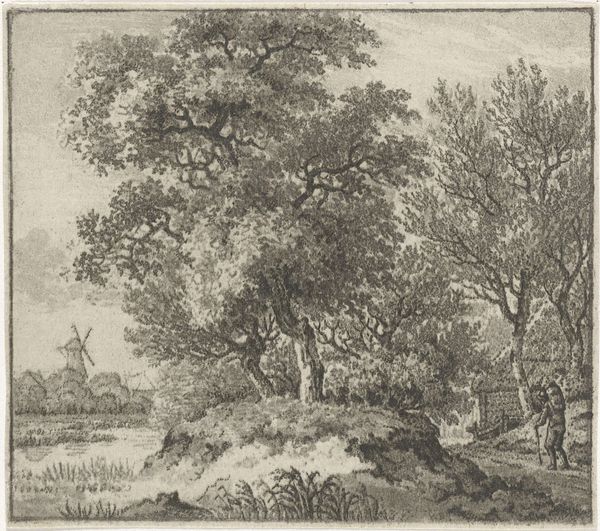
etching
#
dutch-golden-age
#
etching
#
landscape
#
etching
#
figuration
Dimensions: height 133 mm, width 151 mm
Copyright: Rijks Museum: Open Domain
Curator: Anthonie Waterloo created this etching, “Family on a Forest Path,” sometime between 1630 and 1676, part of a broader Dutch tradition that found profound value in the quotidian experiences of everyday life. Editor: My first impression is that it's very immersive; the starkness of the lines creates such a vivid textural landscape that really draws me in. Curator: Landscape prints gained popularity in the Dutch Golden Age as they often carried messages of national identity, prosperity, and even religious sentiment amidst burgeoning mercantile endeavors. Prints democratized images, reaching audiences outside elite circles. Editor: I see that— the composition leads you in with layered foliage acting like curtains revealing this tiny family almost lost amidst towering trees. Structurally, the contrast is quite stark. The darkness of the path and thick trees contrast strongly with lighter areas, dividing our gaze. Curator: Waterloo was particularly skilled in capturing light and atmosphere, contributing significantly to printmaking which allowed more and more common folk to afford artwork at the time. This scene exemplifies values placed upon family at the time. Notice their central placement and their unhurried posture? This was quite important to the growing middle class of the Dutch Republic. Editor: Absolutely. Waterloo employs a dense network of fine lines which give the trees this vibrant, almost pulsating quality— they don’t simply exist on the page; they seem to breathe. Note, especially, the canopy’s layered complexity above our miniature family; its visual weight and presence suggests both shelter, and the sublime. Curator: He indeed was celebrated for his detailed portrayal of nature; artists like him provided a source of pride that many people found appealing during their tumultuous, reformation-era. These works also helped the common person engage in higher expressions of civic life! Editor: It’s an emotionally charged piece. One could argue it’s not just an ordinary family depicted, but Every family— making their way through the imposing complexities and unknowns of the world represented here. What looks on its surface like simple documentation also expresses universal feelings we continue to experience today! Curator: Well, reflecting upon this today allows us to acknowledge not just what these early republic citizens prized but what we continue to: the journey, family, and art, all intimately entwined! Editor: Indeed! The visual language still speaks across centuries connecting art's purpose—then and now— illuminating truths and values that echo into our lives.
Comments
No comments
Be the first to comment and join the conversation on the ultimate creative platform.
